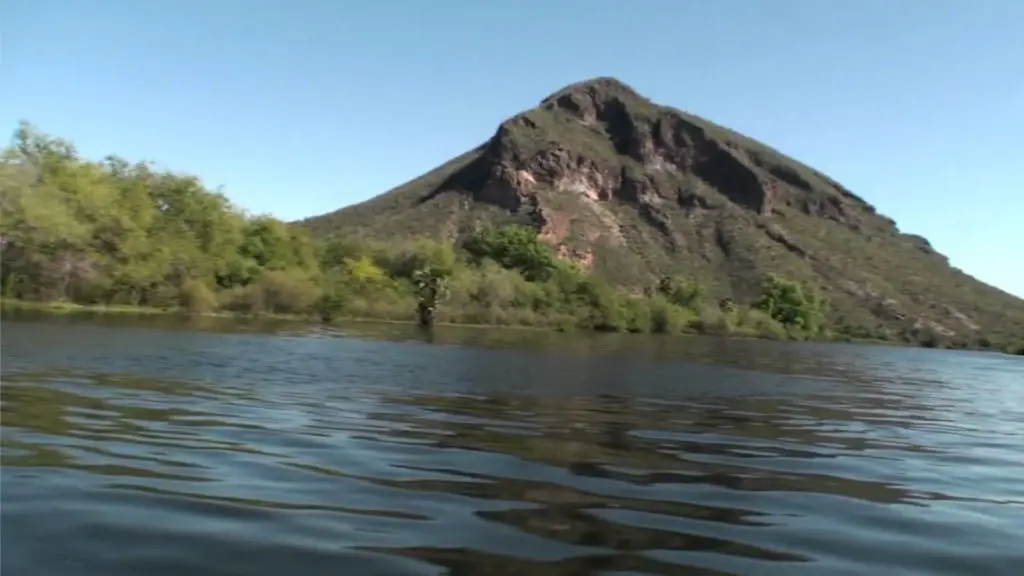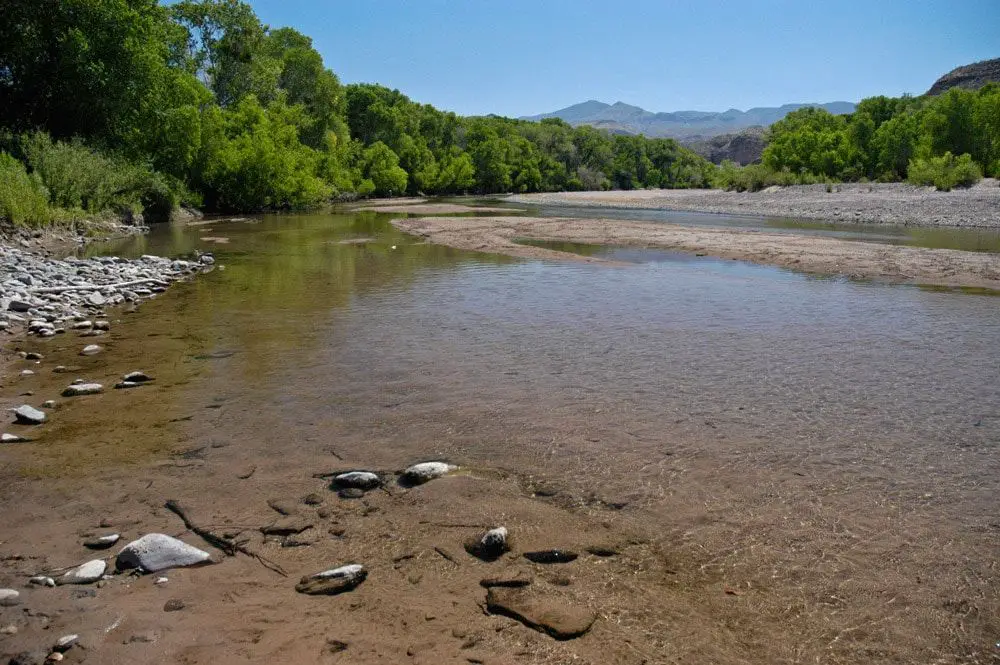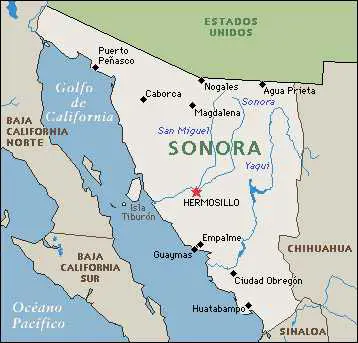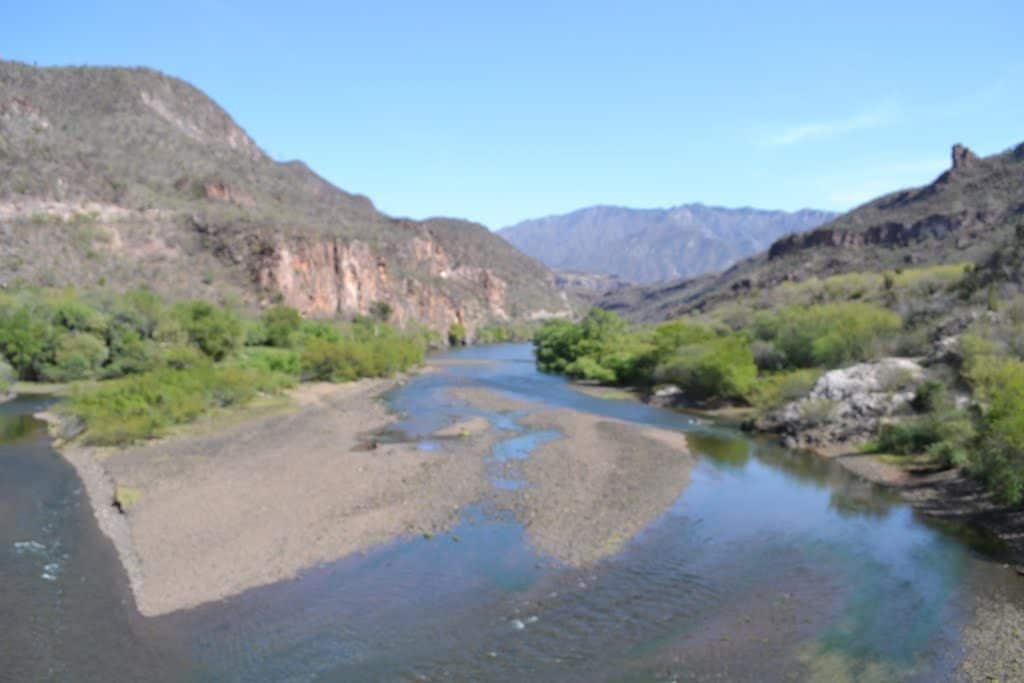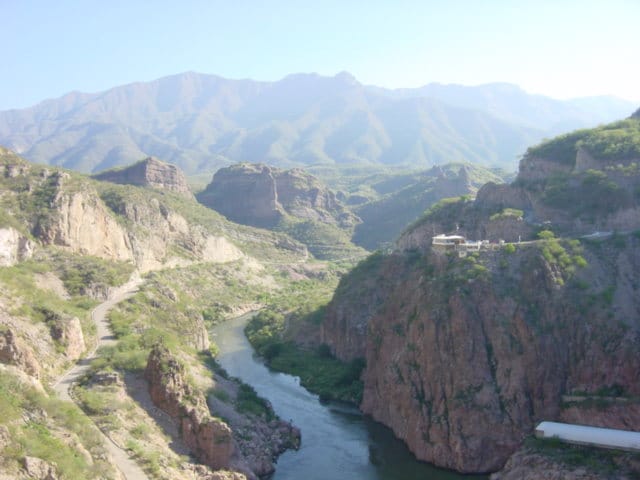The Yaqui River is the largest river system in Sonora. It is retained by the Álvaro Obregón Dam above Ciudad Obregón and the Novillo Dam above Soyopa.
The river is extensively used for irrigation. Wheat, corn, rice and fruit are the main crops along its lower reaches. The Yaqui is not navigable.
Indice De Contenido
History of the Yaqui River in Sonora
As early as the 6th century AD, indigenous people known as Yoem Vatwe or Yaqui lived in family groups along the Yaqui River (see article: Río Nora).
The Yaqui used simple irrigation techniques to grow corn, beans and squash, while hunting local animals and gathering wild foods from the area.
The Yaqui traded native foods, furs, shells, salt and other products with many indigenous groups in central North America. The Yaqui lived more or less independently until the late 19th century.
When the Mexican army forced many of them off their lands around the Yaqui River and into more remote areas, many Yaquis left the Yaqui River area to fight in the Vakatetteve Mountains, while others moved to Yaqui communities in Arizona (see article: Manu River).
Many Yaquis left the Yaqui River area to fight in the Vakatetteve Mountains, while others moved to Yaqui communities in Arizona (see article: Manu River).
By the late 1880s, the war with the Mexican army had killed many members of the Yaqui tribe, leaving only 4,000 Yaquis in the Rio Yaqui area.
In the early 20th century, after a series of conflicts with the Mexican army, many of the remaining Yaquis were arrested and dispersed to plantations on the Yucatan peninsula.
The survivors continued to resist until the late 1920s, when the Mexican authorities crushed the resistance by using heavy artillery and aeroplanes to bomb Yaqui villages.
Location and map of the Yaqui River
The Yaqui River is located in the state of Sonora, in northwestern Mexico. It rises in the Sierra Madre Occidental at the confluence of the Bavispe and Papigochi rivers, near the border with the United States.
The Yaqui River flows generally south and west through Sonora for about 200 miles (320 km), crossing the coastal plain to empty into the Gulf of California 28 miles (45 km) southeast of Guaymas.
The economy of the Yaqui River
In the early 20th century, Major Frederick Russell Burnham, a famous American explorer, travelled to Mexico in search of mineral resources (see article: Río Murray).
There he met the naturalist Dr Charles Frederick Holder, and the two men soon became involved in the early irrigation project on the Yaqui River.
Burnham argued that a dam could provide year-round water to the rich alluvial soils of the valley, transforming the region into one of the world’s garden capitals and generating much-needed electricity.
He bought water rights and about 300 acres (1.2 km2) of land in the region and contacted an old friend from Africa, John Hays Hammond, who did his own surveys.
He then bought a further 900,000 acres (3,600 km2) of this land – an area the size of Rhode Island. He became a close business associate of Hammond’s and led a team of 500 men.
In surveying the mining properties owned by Hammond, J.P. Morgan and the Guggenheims in the state of Sonora (see article: Rio Cea).
Just as the irrigation and mining projects were nearing completion in 1912, the outbreak of the Mexican Revolution thwarted their plans.
The final blow came in 1917, when Mexico passed laws prohibiting the sale of land to foreigners. Burnham and Hammond held on to their properties until 1930, when they sold them to the Mexican government.
In his case study of Burnham’s American colonisation scheme, Professor Bradford concluded: “A combination of Indian problems, the complexities of the unfolding Mexican revolutionary process, and an unclear mandate from Washington DC served to derail the colony.
Burnham, along with Holder, made archaeological discoveries of what he believed to be remnants of Mayan civilisation in the region, including the Piedra Esperanza.
In his book The Book of the Damned, Charles Forte would use this stone as proof that aliens from outer space had been on Earth. The supernatural nature of this stone would be perpetuated by many other authors in several later books on anomalies.
Fauna of the Yaqui River
The Yaqui River was once home to the American Crocodile (Crocodylus acutus) and represented one of the northernmost natural habitats for the species.
Decades of environmental degradation in the region led to the extirpation of the species from the area. This was almost the southern range of the Mexican grizzly bear.
The native Mexican trout or Yaqui trout and 34 other fish species remain in the river.

